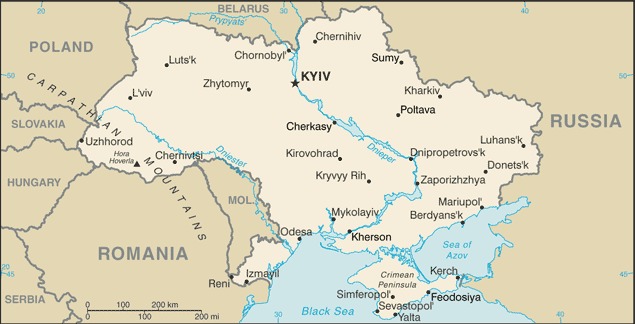Ukrainian Fighters Get More Weaponry To Aid Their Dogged Resistance to Russia
Video released by the Ukrainian Ministry of Defense purports to show Ukrainian troops operating captured tanks and armored vehicles at Brovary, which would indicate that some Russian troops fled the battle or surrendered.

The Biden administration will supply another $200 million worth of American anti-tank and anti-aircraft missiles to Ukraine as the long-awaited Russian push into Kiev begins. This new allocation of weapons comes on top of the $350 million American arms package during the first week of the war in February.

American Javelin and Anglo-Swedish NLAW anti-tank guided missiles have wrought havoc on advancing Russian armored columns throughout Ukraine. Case in point was March 10 at Brovary on the eastern outskirts of Kiev, where drone footage showed Ukrainian missile teams ravaging the Russian 6th Tank Regiment.
Video released by the Ukrainian Ministry of Defense purports to show Ukrainian troops operating captured tanks and armored vehicles at Brovary, which would indicate that some Russian troops fled the battle or surrendered.
Kiev
Russian units on the west bank of the Dnieper began their long-awaited move toward Kiev, only to meet fierce resistance at Irpin, a suburb three miles north of the Ukrainian capital. The Ukrainian army destroyed the main road bridge over the Irpin River, forcing Russian infantry to advance on foot and rendering them vulnerable to small arms, mortar attacks, and artillery fire from the town’s defenders. At present, the Russian attack on Kiev from the northwest appears to have stalled.
Russian armored elements moving to encircle Kiev from the west appear to have halted their forward advance at Yasnohorodka, a small village 20 miles west of the Ukrainian capital. This pause is likely the result of the supply problems plaguing the Russian army.
The Butcher’s Bill and Its Home Front Consequences
American defense officials on March 9 issued an estimate that the Russians have suffered 5,000 to 6,000 combat deaths in Ukraine. This means that in just over two weeks, the Russian army has suffered almost 50 percent as many killed in action as it incurred during 10 years of fighting in Afghanistan.
Writing in the Atlantic, Joy Neumeyer described how public discontent over the Afghanistan war became a growing source of concern to the Politburo during the late-1980s, despite the massive state security apparatus of the Soviet Union: “The Central Committee of the Communist Party received letters from veterans, their relatives, and members of the public about soldiers’ difficulty adjusting to life back home and the apparent futility of their mission.”
The communications technology of the 21st century has spread the ill-tidings of war rapidly throughout Russia, triggering anti-government protests on the streets of Moscow, St. Petersburg, and more than 60 other cities. Almost 14,000 protesters have been arrested since the war began, with more than 5,000 detained on March 6 alone.
On March 12, President Zelensky announced Ukraine had suffered 1,300 combat fatalities since the war began on February 24.
The Road to Odessa
Ukrainian defenses continue to hold around the strategic town of Mykolaiv, home to the Varvarovskyy Bridge over the southern Buh River that is a must-have objective for a Russian advance toward the port city of Odessa. Stymied at Mykolaiv, the Russians have attacked north to the next crossing point across the Buh at Voznesns’k, but have been stymied there as well by fierce Ukrainian resistance. This failure to seize a bridgehead over the Buh precludes any possibility of an attack on Odessa.
Hands Off Our Mayor
Thousands of Ukrainian civilians filled the streets of Melitopol to protest the arrest of their mayor by the Russian army. It turns out Mayor Ivan Fedorov was less than enthused about the invasion of his city by Russian tanks and armored personnel carriers.
After Mr. Federov dared speak truth to power by criticizing Vladimir Putin’s aggression, he was frog marched into captivity by a squad of heavily armed Russian soldiers, an act captured by CCTV camera overlooking City Hall.
Routes of Supply
The Russians expanded the scope of their military offensive, firing air-launched cruise missiles at a military base in western Ukraine at Yavoriv near the border with Poland. This attack comes after a declaration by the Russian deputy foreign minister, Sergei Ryabkov, that Western weapons shipments to Ukraine would be considered legitimate military targets.
The stricken military base was home to the International Center for Peacekeeping and Security, where NATO personnel previously conducted training programs for the Ukrainian military. Latest reports count 35 dead and more than 130 wounded.
Russian aircraft also hit the airfield at Ivano-Frankivsk in western Ukraine, most likely because it was being used as a transshipment point for weapon supplies from NATO.

